It can be tough to remake old games. The older they are, the more challenging it can be to balance introducing modernization and new mechanics without losing the feel that made the games shine. Dragon Quest is particularly tough, as the oldest games in the franchise quite literally invented the JRPG genre as we know it, and the series represents the earliest days of limited design and experimentation. You could just remake Dragon Quest 1 as something more "standard," but it'd be a very different beast. Dragon Quest 1&2 HD-2D Remake attempts the challenging task of walking that tightrope with the first two NES games in the franchise. Thankfully, it largely succeeds, creating what is probably the best way to play the games to date.
Dragon Quest 1 & 2 HD-2D continues the story of the Erdrick bloodline introduced in Dragon Quest 3 HD-2D. After the events of that game, the legendary hero's bloodline faded into obscurity. With the rise of a horrible creature known as the Dragonlord, the descendant of Erdrick must return to slay him and rescue the princess of a local kingdom. Hundreds of years after that quest, the descendants of Erdrick's descendants — who have become the royal families of the towns of Caddock, Middenhall and Moonbrooke — must unite to stop the evil dark priest Hargon from ravaging the land with his army of monsters.
In terms of revamping the story, Dragon Quest 1 does a good job of taking arguably the most simplistic and plot-light JRPG and fleshing it out to add more personality and character to the straightforward structure. The princess probably benefits the most from this, as she gets significantly more character and dialogue, and you can bring her with you for most of the game. The game has alternate cut scenes with her, and she cheers on your protagonist in battle. She doesn't end up a super fleshed-out character, but she's at least a character. Ultimately, Dragon Quest 1's story is a hero rescuing a princess and slaying a dragon and little more, but that's fine for what it is. It means that players need to be open to a very straightforward story to enjoy it.
Dragon Quest 2 goes further and is probably the most "standard" JRPG-feeling of the three HD-2D remakes so far. While your protagonist is a mute stand-in, the part is rounded out by the prince and princess of Cannock and the princess of Moonbrooke, all of whom add some much-needed personality to the experience. It helps the experience move along when characters are talking and bouncing off one another, and I enjoyed Dragon Quest 2 the most. The plot and characters are still simple, and it's a straightforward adventure about beating up some bad guys, but it does its job well enough, and the humor makes the experience shine. In particular, the princess of Cannock is a very welcome addition, as her spunky personality rounds out the more straightforward Moonbrooke and her timid brother.
Dragon Quest 1 and Dragon Quest 2 are structured more like a straightforward adventure than most modern RPGs. You're given a goal, and you go out into the world to complete the goal however you can while using the available tools. You'll generally be guided toward specific dungeons and areas by NPCs, but it's far less strict than expected, and you can complete challenges and dungeons in nonlinear fashion. You're locked out of some paths via needing magic keys or specific methods of travel, but there's a real sense of exploration that makes the games feel distinct. Of course, if you don't like having to figure out where to go, you can turn on a handy guide that shows your next primary objectives on the map.
Dragon Quest 1 & 2 HD-2D uses roughly the same combat system as Dragon Quest III HD-2D, which is to say it uses perhaps the most basic and straightforward RPG combat system one can imagine. Remember, these are the games that invented the genre. It's straightforward turn-based combat, where you and the enemies take turns hitting each other until one goes down. HP and MP are straightforward, and if you've ever played an RPG, you can pick up and play these games with little challenge. There aren't even any job systems or skill systems to worry about.
Probably the most distinct feature between the two is that Dragon Quest 1 only has a single playable character. When the original game was released, this was true of both friend and enemy, but 1 & 2 HD-2D has your protagonist going up against multiple foes at once. This drastically changes how you need to approach fights because enemies will often be getting three or more actions in a fight, compared to your character's singular one. Your hero in Dragon Quest 1 is absurdly powerful, with a range of physical and magical skills. He can even grant himself extra actions, so it isn't as one-sided as it seems.
In comparison, Dragon Quest 2 has a full standard RPG party. In a twist from the original games, you have a four-person party. The protagonist was originally joined by his cousins, the prince of Cannock and the princess of Moonbrooke, while the remake adds the princess of Cannock too. Unlike Dragon Quest 3, each of the characters has a set list of skills and abilities, with the protagonist primarily geared toward being a physical beatstick and the others being a mix of magic and support abilities. The prince of Cannock is a mix of physical and magic abilities, the princess of Moonbrooke is primarily magic-based, and the princess of Cannock has a wide range of support and multi-hit abilities.
In both games, you can find special scrolls in chests or as rewards for certain quests. These scrolls are single-use items that will permanently teach a move to the character of choice. Your Dragon Quest 1 protagonist can learn everything, while the cousins are more limited. You won't be able to teach heavy-hitting sword attacks to the princess of Moonbrooke, while your DQ2 protagonist can't learn magic spells. This allows for some light customization, such as deciding which character should focus on buffs or healing.
The biggest change to the combat system in Dragon Quest 1&2 is sigils. Once obtained, these special items will grant your protagonist new passive bonuses. One allows you to replenish MP while defending, and another massively increases the power of healing items. The most intriguing sigil gives you a limit break. When below 50% HP (or when you have certain status effects), several of your hero's moves can be modified by holding down the Y button when attacking. This changes them into stronger or wider hitting — or occasionally, entirely different versions of the attack, complete with different MP costs. A defensive skill can transform into pincushion, which increases defense and causes enemies to take damage when attacking. A magic spell can go from single target to multi-target. Healing spells can grow more potent. An HP-recovering buff may become an MP-recovering buff. It's a cool concept and adds some complexity to combat, as these modified spells can be triggered when selecting an attack or by holding Y as your character's turn comes up. If you take a huge chunk of damage, you can punish the enemy by spending more MP. In Dragon Quest 2, these modified abilities are also unique to each character, with the same spell transforming in different ways depending on who learned it.
Combat can be pretty hard-hitting in the game in both directions. Enemies are strong, fast and powerful, and they can easily overwhelm your party if you try to mash-attack every round. You have access to a lot of incredibly strong and powerful abilities, including ones that do specialized damage to certain enemy types, increasingly potent buffs and debuffs, and a variety of healing skills. It's not the most complex combat system on the planet, but it rewards players for considering all of their tools and using debuffs and status effects to lessen incoming damage. Likewise, MP conservation can be important, and you may leaving dungeons midway through to replenish MP, especially since the game rarely provides full heals before boss fights.
While Dragon Quest 1's revamped mechanics provide for an interesting challenge, it doesn't necessarily work in the game's favor. Having only a single character drives home how frustrating it can be when you have five enemies attacking at once and you must choose between healing and attacking, which can easily lead into an endless spiral. Pretty much the only reason the combat feels viable is because the hero is an insanely overpowered jack of all trades with access to incredibly powerful equipment, and it's easy to start overpowering things. There's fun to be had in the challenge, but only one action per turn can feel limiting. It's also very easy to get absolutely wrecked in a single turn, but the game's autosave feature helps limit the frustration.
In comparison, Dragon Quest 2 feels a lot better. Just having a party means that you have more available options, and it prevents the concern of losing progress. It feels right to be able to focus on attacking, buffing and healing in the same turn. I didn't dislike the Dragon Quest 1 section of the game, but it felt like an extended prologue for Dragon Quest 2.
The two games are fun, but they may not appeal to players in the same way. Dragon Quest 1 is interesting as a modernized version of the most basic JRPG, and it's an example of a game with some interesting design elements due to its age. The bare-bones plot and one-character gameplay means it's easy to imagine someone stepping away because it's so basic. In comparison, I found Dragon Quest 2 to be the most enjoyable of the three HD-2D titles. I missed the customization of Dragon Quest 3, but the structure and inclusion of plot characters got me invested in the gameplay and story.
In terms of presentation, Dragon Quest 1&2 HD-2D is pretty much on par with Dragon Quest 3 HD-2D, but there are some improvements. The sprite work has seen some nice updates, and there's more animation in places and more creative cut scenes. It's still in the same realm as the previous game, but they are flexing their creative muscles more. The soundtrack and voice acting are pretty much directly on par with Dragon Quest 3 and the franchise as a whole. I've heard the Dragon Quest music so much at this point that it's difficult for me to get excited about extremely straightforward remixes. It does its job well, but I wish they'd reused old music with some more creativity. The voice acting is quite good, and it makes the humor hit well, particularly in the Dragon Quest 2 segment. However, the voice actors clearly stumble sometimes over the Ye Olde English speech that everyone uses.
Dragon Quest 1&2 HD-2D Remake is a wonderful remake of a pair of classic games. It's clear a lot of time and energy was invested in attempting to modernize the originals without losing what makes them distinct, and they've generally succeeded and succeeded well. Most of the improvements add to the game, and the revamped plots are a step up from the original. The game's only problem is that it's an extremely shiny and well-crafted update of two NES-era RPGs. Assuming you're not turned off by that concept, there's no better way to experience the origin of the genre than by playing Dragon Quest 1&2 HD-2D Remake.
Score: 9.0/10
More articles about Dragon Quest I & II HD-2D Remake



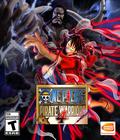
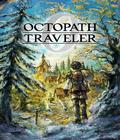

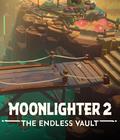
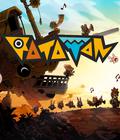
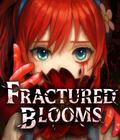

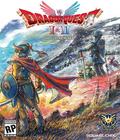 Dragon Quest I & II HD-2D Remake will continue the classic RPG trilogy’s narrative, offering players two adventures to undertake in Dragon Quest I and Dragon Quest II.
Dragon Quest I & II HD-2D Remake will continue the classic RPG trilogy’s narrative, offering players two adventures to undertake in Dragon Quest I and Dragon Quest II.




























